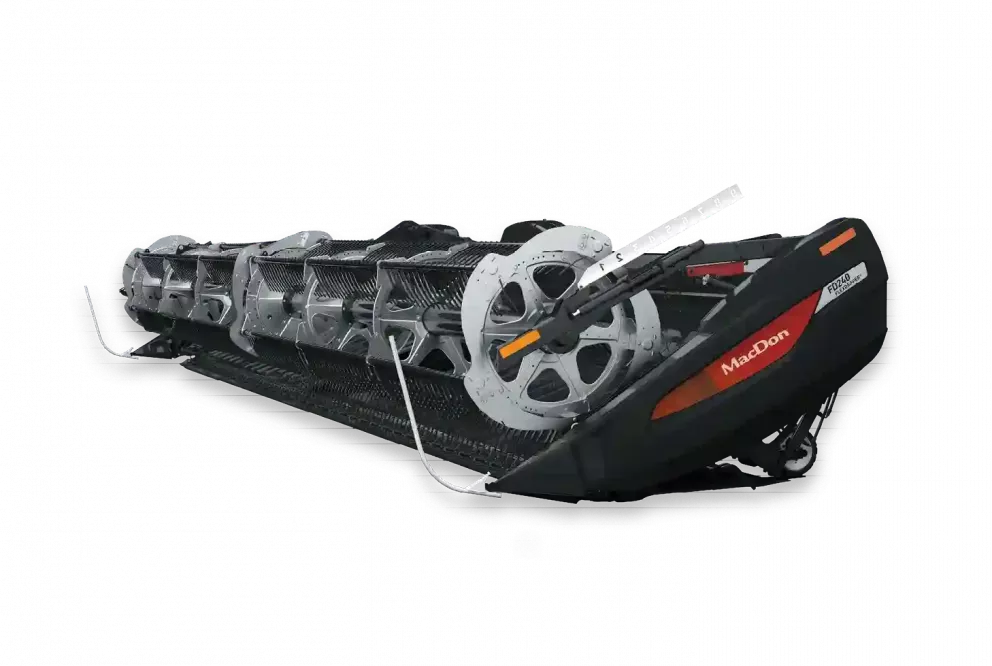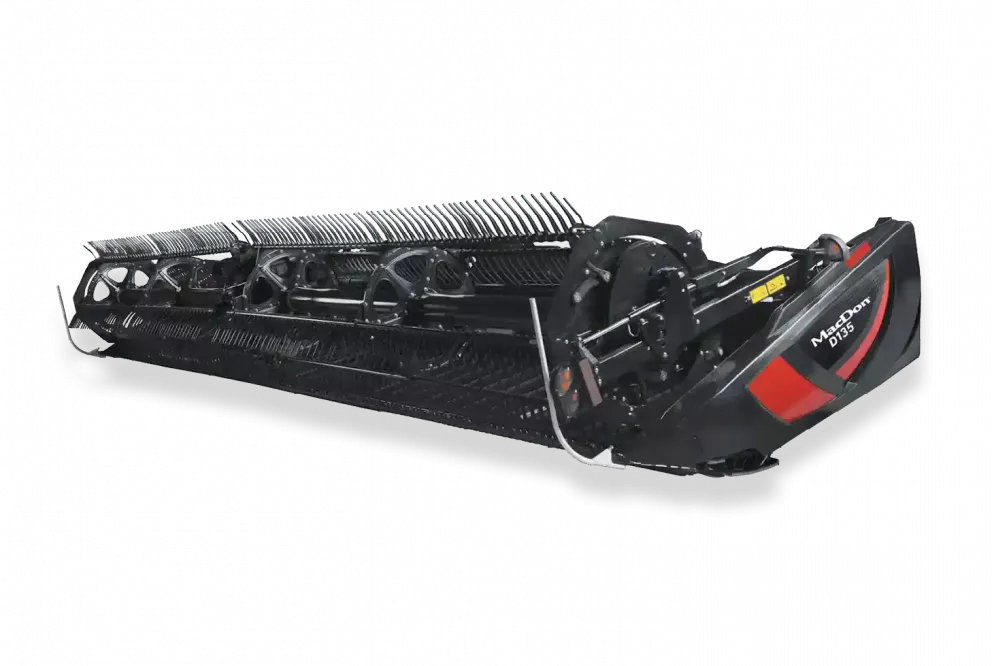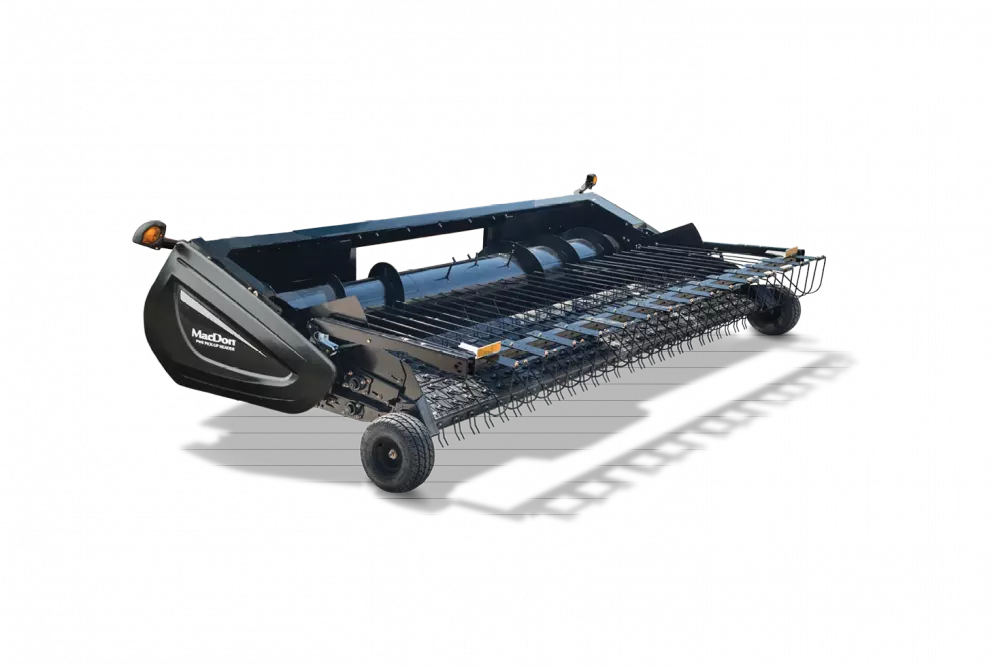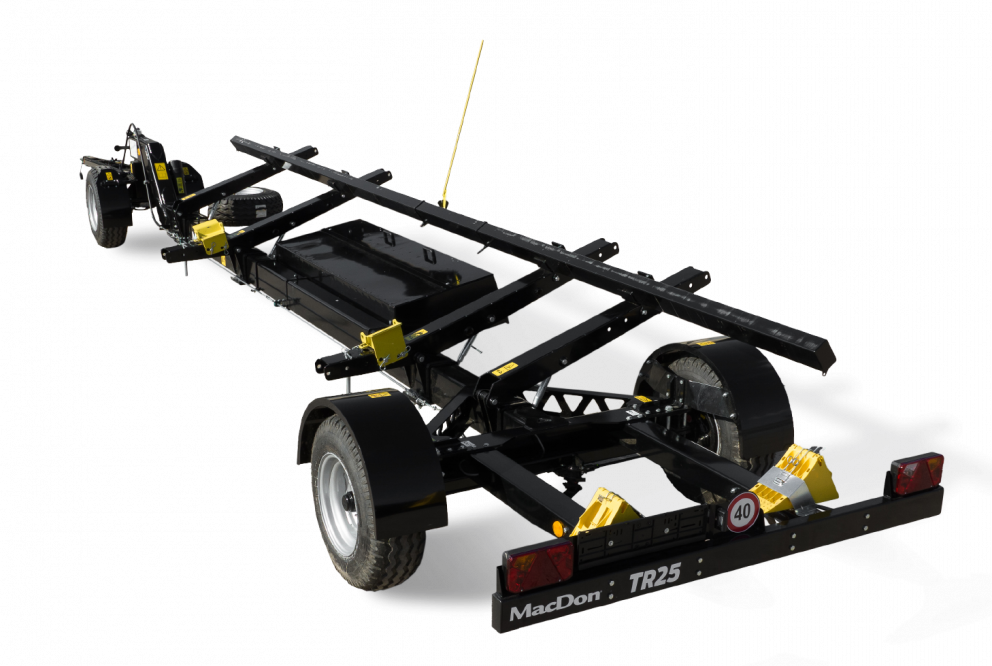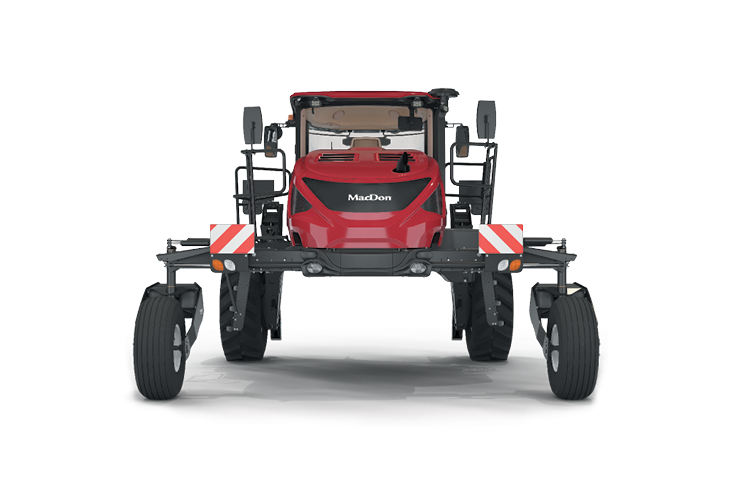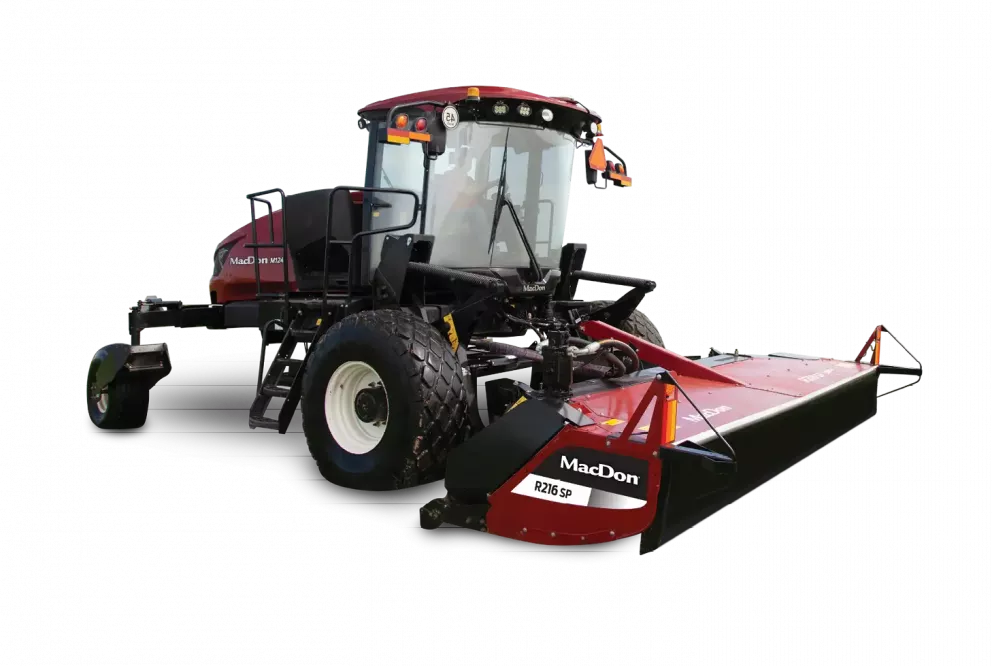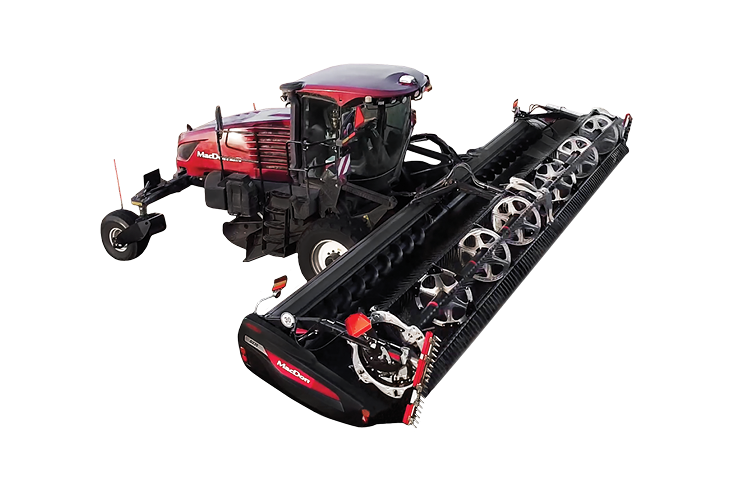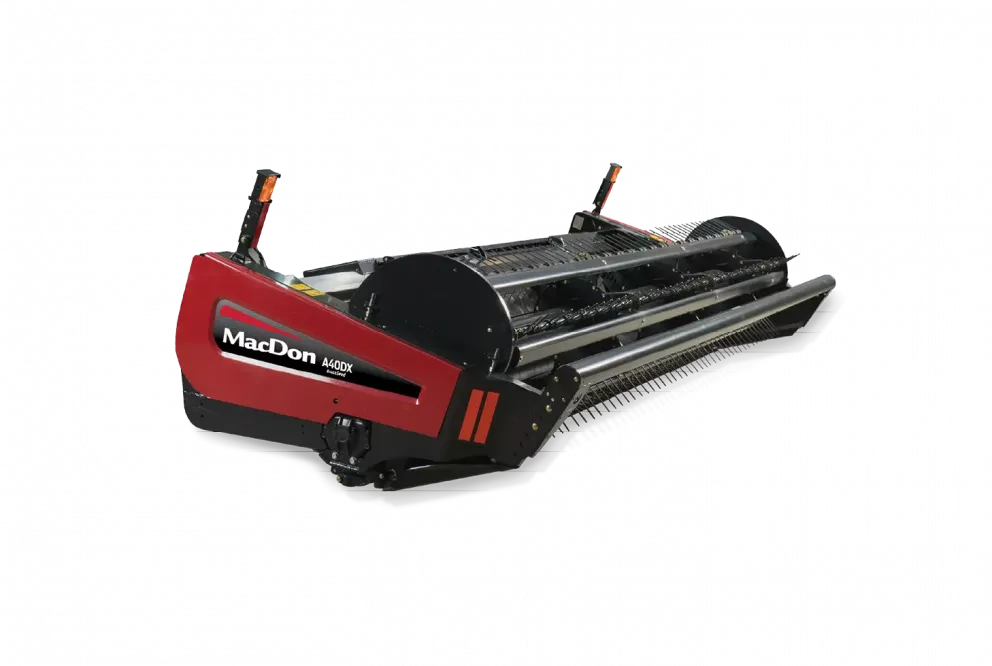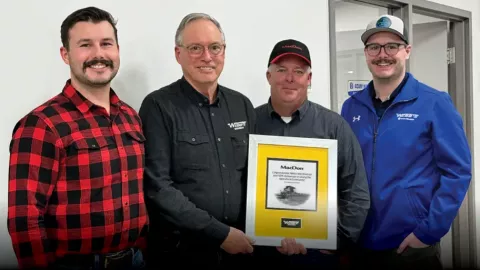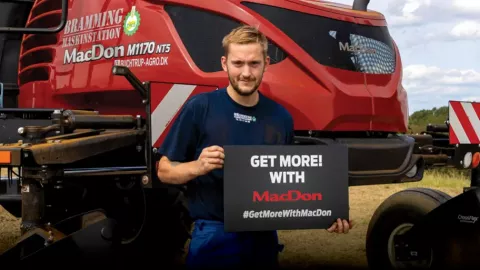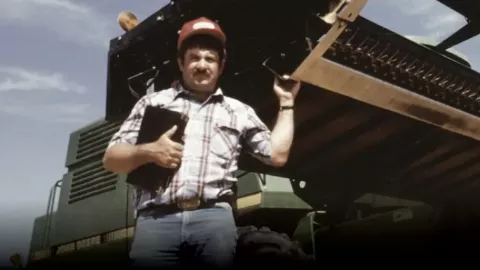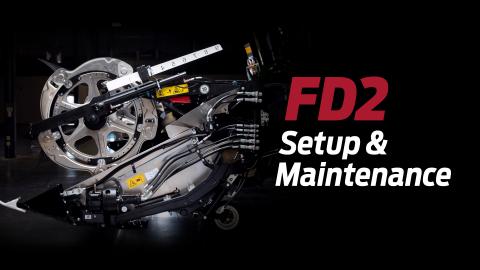Travelling Man
Demaray Harvesting brings workers from all over the globe to Custom Harvest and they are spreading the word about MacDon FlexDrapers.
In a bygone era, young Irishmen like Billy Kelly - those who are eager for adventure and foreign travel - might have joined the navy or merchant marines. But in 2018, they have another kind of fleet they can join; the armada of custom cutting combines that starts out every spring in southern states like Texas or Arizona to follow the ripening grain northwards.
“The way I see it, I’m getting paid to see the world,” said Kelly who hails from the county of Kerry in Ireland’s southwest. “To me it’s a holiday. Where else could you start in Arizona and finish up 10 miles inside the Canadian border. You get to see the country from one end to the other, not just the cities. It’s a way to see the real America that not many people from my part of the world can say that they have seen.”
Kelly is just one of hundreds – if not thousands – of workers employed by America’s custom grain harvesters every year under the US Government’s H-2A Program which permits agricultural employers to hire foreign workers for seasonal work. This year alone, according to statistics published by the US Department of Labor, approximately 200,000 foreign workers were issued Visas under the program for employment on everything from dairies to tobacco farms across the US.
“If the government didn’t allow this H-2A program we would be out of business, it’s just that simple,” said Tim Demaray, owner of Demaray Harvesting, the company for which Kelly works. “It is impossible to hire enough American workers to operate this equipment seasonally. It is absolutely impossible.”
While opting to hire foreign workers has become a necessity for many custom cutters, Demaray says that the solution is not without its complications.
“We have to go through a lot of red tape to get them here. The process for the visa application can take three months alone. Once the United States Department of Labor (USDOL) has approved
our application and the United States Citizenship and Immigration Services (USCIS) issues the visas, the selected personnel have to go to their respective consulates for an interview, which can take quite a while to schedule. Then they have to wait for their visas to arrive and arrange for their flight over here. Once over they then have to apply for a social security number, which takes another week, and then they have to get a Department of Transportation physical so that they can apply for a commercial drivers licence. After that they have to take a written test and then wait another two weeks before they can take the practical test. It’s all very time consuming.”
“HAVING A HEADER LIKE THE FLEXDRAPER® MAKES OUR JOBS EASIER, WITHOUT A DOUBT.”
Demaray says that he has to get his foreign workers to his base in Arizona by the third week of April, so that they can complete this process in time for the beginning of his harvest run in mid-May.
“I try to hire people who have experience related to what we are doing, either driving trucks or who have worked on farms doing work like silage harvesting. I have found that European drivers, especially if they have experience driving on both sides of the road with right hand steering, tend to be pretty skilled drivers. We also tend to get a lot of hires through referrals from people who have worked for us before.”
He also needs people willing to put in long days of hard work, sometimes for weeks on end without much break.
It’s a profile that fits Billy Kelly to a tee.
“Back home I come from a farming background and normally work construction where I run an excavator. I knew a guy who worked for Tim a few years ago and now I am here. Back in Ireland it is all forage harvesting, because it is all dairy. I have driven lots of forage harvesters, but never grain combines.”
Because many of his foreign employees have limited experience with combines, Demaray says that it is important that the equipment he uses is both easy to handle and maintain.
“Ten of my eleven Case combines are currently running FD1 FlexDrapers, and the last one an FD75. I really like the FlexDraper’s reliability and the job it does. We also don’t have any trouble with chopping the reel fingers off, which is easy to do with other headers. It’s just a really nice operating head for us and not much cost to maintain.”
Kelly, still in his first year custom cutting, confirms that Demaray’s FlexDrapers make his job easier.
“The FlexDraper’s simplicity is amazing. Because there is nothing that can go wrong you can go hours and hours without stoppage,” said Kelly. “There’s nothing difficult to do on that header and maintenance is so easy anyone can do it.”
“Down in Arizona we ran these MacDon headers in downed wheat alongside some guys who didn’t have MacDon’s and, to be honest, those poor guys had an awful time of it. But we didn’t have any trouble with crop feeding then or after. Sometimes, when we were in standing canola that was quite green, the combine would plug but not the header – it always worked flawlessly. Having a header like the FlexDraper® makes our jobs easier, without a doubt.”
Micky Kane, another foreign worker on Demaray’s crew, concurs.
“In terms of reliability this year our FlexDrapers have been fantastic. We really haven’t had any major breakdowns, or needed to do any major work on them” said Kane who calls Leicestershire, England, home.
Kane, who is in his fifth year custom cutting and seventh “consecutive summer” harvesting, says that he has also spent time cutting in Australia and New Zealand, all to get more experience on combines. Working for Demaray that experience has included time in wheat, barley, canola, soybeans and specialty crops like chickpeas, pinto beans, navy beans and edible beans.
“I first became interested in combines working for a small grower in England, who had a small combine to cut his crops. Back home I never saw a draper front running; everyone told me that they weren’t suitable for the heavier European crops. But now that I’ve seen these FlexDrapers perform in heavy, tough green straw similar to what conditions would be like at home, I think they would work brilliantly on our farms.”
“In fact, if the grower I used to work for asked my opinion, I’d say that these FlexDrapers would definitely be an improvement over what he is using now, especially in things like beans. I remember using a rigid header to cut his beans, and we experienced lots of header loss. These FlexDrapers would help with that.”
When Performance Magazine caught up with Demaray’s crew for this interview, they were working on a job in northern North Dakota, not far from MacDon’s headquarters in Winnipeg, Manitoba. The proximity afforded everyone the opportunity to visit MacDon’s plant and see how the headers that they have been using all summer are made.
“The whole process of making a FlexDraper is amazing. Seeing how a flat piece of steel can go in one end of the shop and a finished header comes out the other is really something,” recalled Kelly. “The simplicity of MacDon’s operation is also impressive, because when you look at a header it is very complex, but it seems that MacDon has the process fine-tuned so everything is done very efficiently.”
Touring MacDon’s plant was equally revealing for Kane.
“MacDon’s factory did surprise me in that it was a lot more high-tech than I imagined. I would have thought that a smaller company like MacDon might be a little behind factories like Case or John Deere, which I have also visited. But some of the technologies that I saw MacDon using are on par - or better - than those I saw at larger manufacturers.”
Kane says that one of the real take away benefits from the tour for him was seeing the FlexDraper in all its stages of manufacture.
“It was nice for us guys who run the headers to see the actual skeleton of the header and how it is put together, especially where it is welded and where it is bolted. That will be helpful should we ever need to do any work on the headers, because we will have a good memory of all that.”
Demaray confirms that the opportunity to see behind the scenes at MacDon was appreciated by everyone on his crew, because so many of them are here to drive the latest harvesting equipment.
“Everyone made comments to me that it was one of the highlights of their trip over here.”
